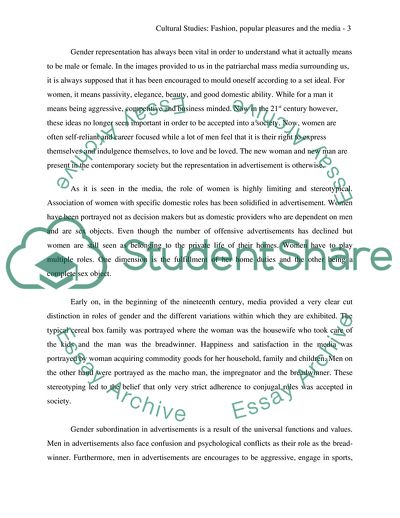Cite this document
(Impact of Media on Fashion, Popular Pleasures, and Gender Identity Essay, n.d.)
Impact of Media on Fashion, Popular Pleasures, and Gender Identity Essay. Retrieved from https://studentshare.org/gender-sexual-studies/1721517-cultural-studies-fashion-popular-pleasures-and-the-media
Impact of Media on Fashion, Popular Pleasures, and Gender Identity Essay. Retrieved from https://studentshare.org/gender-sexual-studies/1721517-cultural-studies-fashion-popular-pleasures-and-the-media
(Impact of Media on Fashion, Popular Pleasures, and Gender Identity Essay)
Impact of Media on Fashion, Popular Pleasures, and Gender Identity Essay. https://studentshare.org/gender-sexual-studies/1721517-cultural-studies-fashion-popular-pleasures-and-the-media.
Impact of Media on Fashion, Popular Pleasures, and Gender Identity Essay. https://studentshare.org/gender-sexual-studies/1721517-cultural-studies-fashion-popular-pleasures-and-the-media.
“Impact of Media on Fashion, Popular Pleasures, and Gender Identity Essay”. https://studentshare.org/gender-sexual-studies/1721517-cultural-studies-fashion-popular-pleasures-and-the-media.


